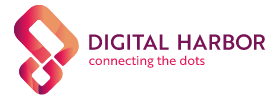Driving Enterprise Transformation through Design Thinking
“Design is not just what it looks like and feels like. Design is how it works.” Steve Jobs
Enterprise technology has turned the workplace into fragmented functions, each isolated and insulated from the other. As more technology tools found their way into workplaces, it became more difficult for enterprise workers to streamline their workflow. Though the ostensible goal of inducing so many tools was to simplify processes, it, ironically, complicated them.
Much of this development can be traced to what many refer as technology myopia. Instead of locating the necessity of a tool in the big picture, bespoke scenarios were used as justification for their induction. As a result, organizations turn into silos of information with disjointed operations on separate layers.
What is Design Thinking?
Of late, the trend of design thinking has really caught up in the consumer market. One of the core principles governing design is to re(verse)-engineer the entire development process from the user point of view. It begins with the user in mind. Above all, the underlying philosophy is that of profound empathy for those you’re building the product, the users.
So, this is about shifting the focus from process and technology to people. It’s about attuning user interface to the emotional responses of a human mind. More than anything else, it’s based on humanizing how people interact with computers.
But, unlike the traditional way of problem-solving through deep, linear thinking, this requires a different approach. Design thinking involves quick implementation of trial-and-error experimentation, that drastically improves user-friendliness with each iteration. This non-linear approach is aimed at continuously push the user into the center of product experience.
Ahead of the curve. Always.
Well before design thinking became a buzzword, Digital Harbor has always prioritized user experience, leading to path-breaking innovations such as Know Your Customer (KYC) for BFSI sector. Indeed, KYC enjoyed unprecedented success, to the extent that, today, it is an industry norm.
It all began with a conscious call to chart the pathways through which the business user navigates the workflow. Thereafter, the solution was dovetailed to allow the stream of activities to flow seamlessly within the core application itself. Though it now seems natural, it was a radical departure from the resident thinking when it was incubated.
Likewise, the diverse range of tasks necessitated in the US healthcare industry, as mandated by Medicaid, required a relook from the most fundamental level. The self-congratulatory tone while implementing advanced technology had to make way for a humble reinterpretation of workflow from user experience perspective.
Again, through Know Your Provider (KYP) and, later, through Know Your Member (KYM), Digital Harbor reimagined and reinvented the way the process streamlining and consistency is achieved. The overarching objective has been to facilitate the user to perform a broad range of activities in a unified platform without having to switch over to multiple task-specific applications.
Social Enterprise Technology: The Next Frontier
During the development of an industry-agnostic, enterprise platform Social Enterprise Technology (SET), the one question that presented itself was how we could make the job of an employee easier and simpler. After all, why does an enterprise need to train non-technical professionals on software, when they do not constitute the mainstay of their key result area.
As always, we flipped the script. Lucy, the face of our conversational application, was designed with the user in mind. Why should users clog their brain with ever-piling mental cache, especially, when computers are good and more reliable as far as storage is concerned? Why dilute their concentration with peripheral activities, when their energies and emotions can be better utilized for creating better value.
There is an apprehension that design thinking stops with importing best practices into organization. Nothing can be farther from truth. This kind of thinking springs from a vibrant work culture that provides the enabling environment for employees to continuously drive innovation and optimization. Where, failures are readily embraced and are used as a creative fuel for further fine-tuning, instead of stalling movement.
